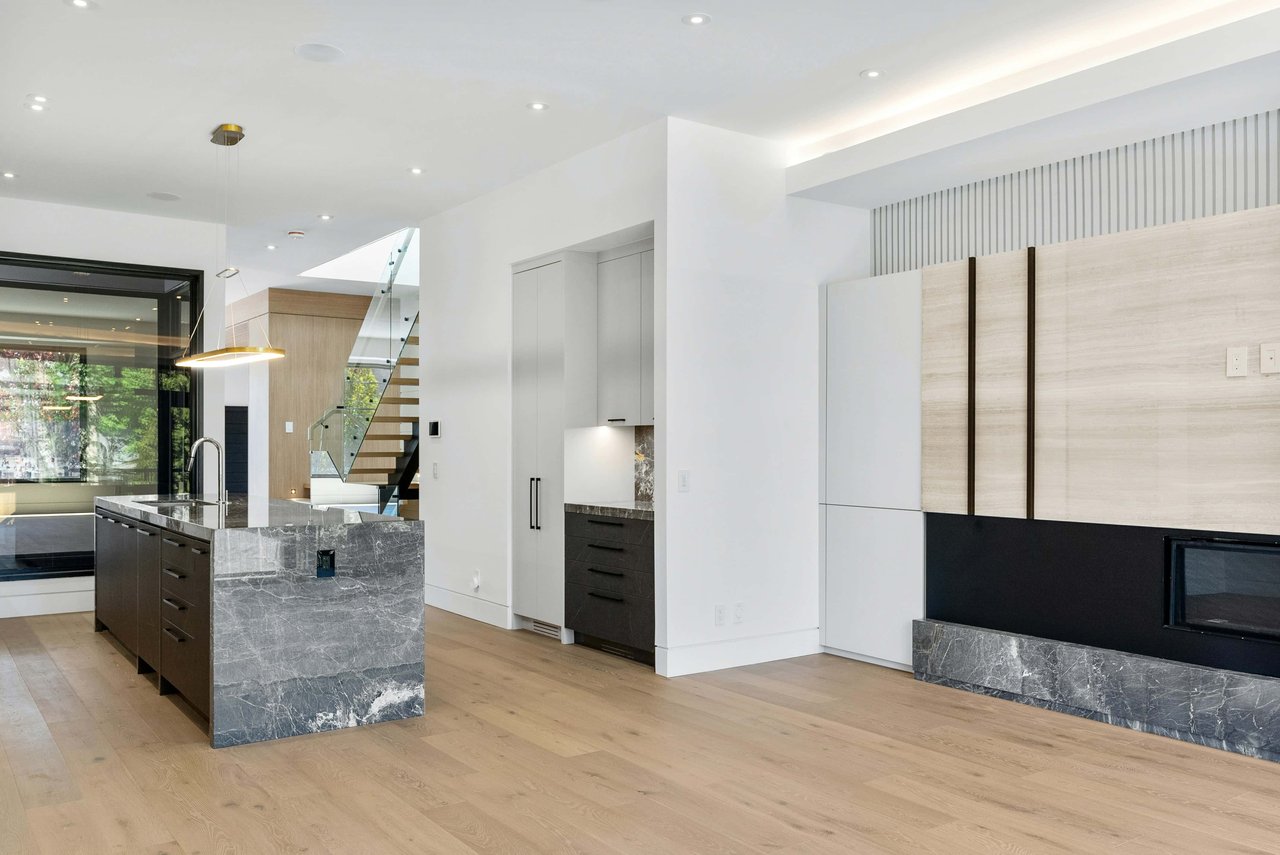For the last two years, the driving force behind the Greenwich market, and nationally, has been the huge shrinkage in inventory. With low inventory has come lower sales. In fact, what is remarkable is that sales have been as high as they have been given how low our inventory is. We are seeing this in every neighborhood. Nowhere do we have enough inventory to meet demand, and this is particularly true in our family-oriented neighborhoods.
In Banksville, Byram, Pemberwick, Glenville and Cos Cob we have very low inventory. Of those neighborhoods, only Cos Cob has double digit inventory. Even in Cos Cob, we only have 19 listings, which is down 60% from what we had in September 2019. Now Banksville, Byram and Pemberwick usually have single digit inventories, but in 2019, in aggregate, they had 17 total listings and this year they only have 7 houses listed or a drop of 59%. For every 5 houses that we had on the market in 2019, we only have 2 houses today.
It’s not just the less expensive neighborhoods where we are seeing low inventory, both Riverside and Old Greenwich are down over 70%. (NB: In the continuing battle between our two most similar areas, Riverside has pulled ahead of Old Greenwich with only 1.8 months of supply compared to Old Greenwich’s 2.0 months of supply this year. Last year it was Old Greenwich with 1.0 MoS to Riverside’s 1.8 months of supply. :)
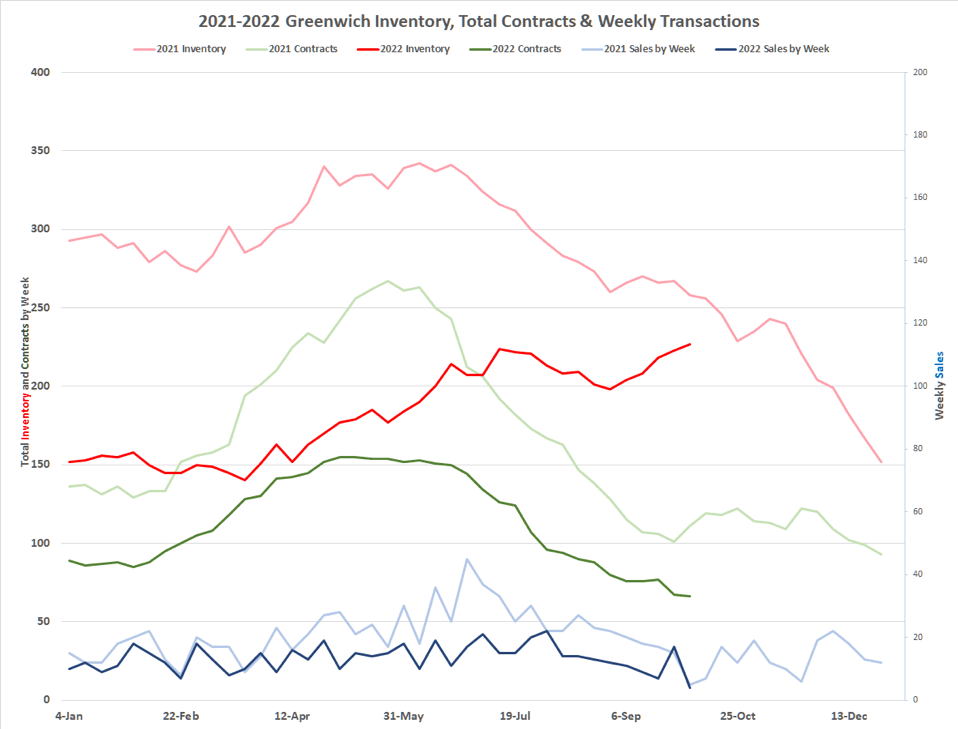
Our inventory reached an all time low in March of this year with only 140 listings. As some of the air has been taking out of the economy, inventory has started to rise. In Greenwich the main agent of change is not rising interest rates pushing up inventory and slackening demand at the lower end, it’s the falling stock and bond markets hurting demand at the high-end. We are seeing less demand above $5 million as inventory ticks up and demand has dropped in the third quarter of 2022 compared to earlier in the year.
Having said that our 2022 market has been tighter than in 2021. We are only now getting back to where we were last year at this time when you look at days on market and listings. If present trends continue, we should finally have the same inventory that we had last year around the beginning of November 2022 of around 240 listings. That is still going to be well below our 10-year average inventory.
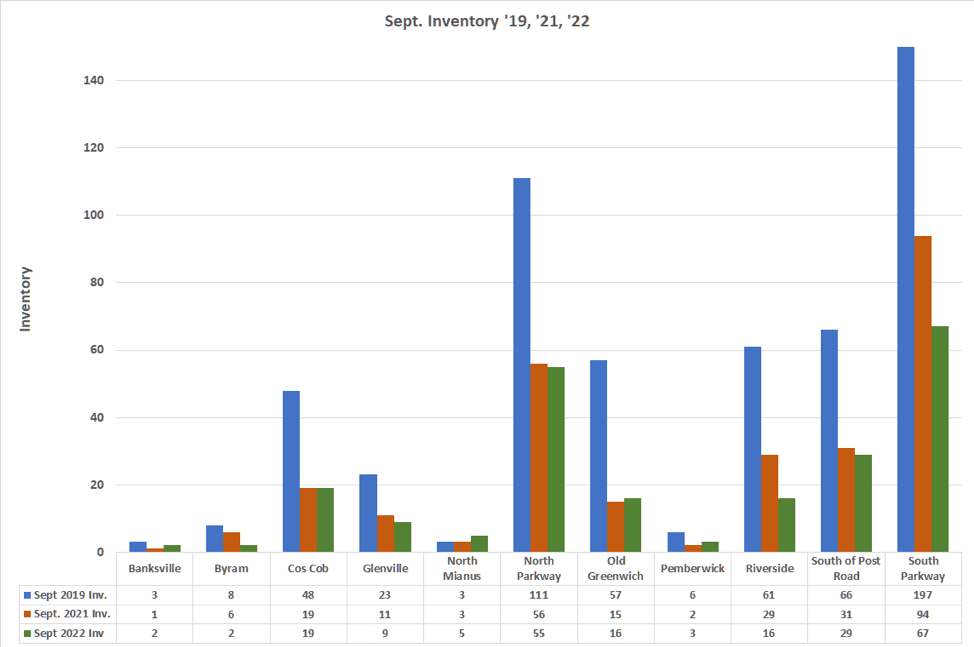
Two neighborhoods in particular have seen dramatic drops in inventory from last year. South of the Parkway is down from 94 listings to only 67 listings this year. This area goes all the way down to the Post Road where we have R-6, R-7, R-12 and R-20 zones (aka the two-family zone, and the sixth, quarter and half acre zones respectively). Since these areas are close to town and often at lower price points they continue to do very well as the demand is there for both.
The other area where we saw a dramatic drop in inventory was in Riverside where inventory went from 29 listings last year to only 16 listings this year. Glenville also has seen a slight drop in inventory from 11 listings last year to 9 listings this year. Other areas like backcountry, Old Greenwich, Cos Cob and South of the Post Road have crept back to about the same inventory as last year.
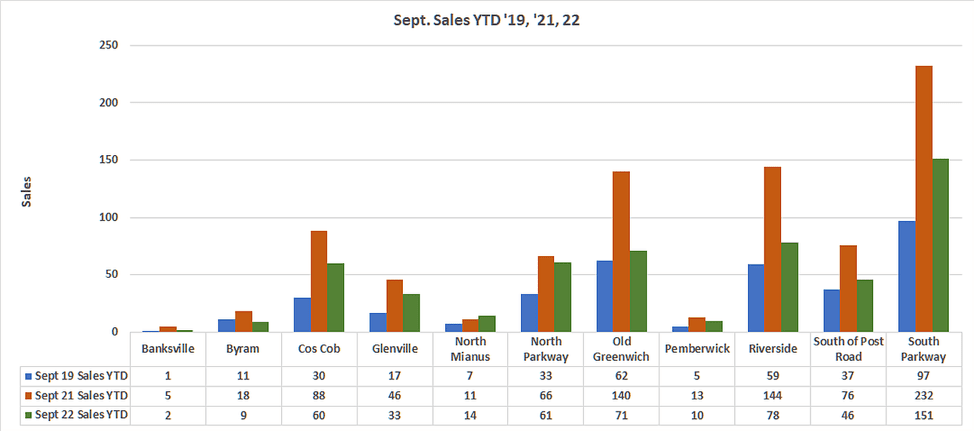
With 2021 being an all-time record year, sales are dropping in every area. At the same time, every area is doing better than we did in 2019. This is truly remarkable, when you consider that we only have 223 listings now compared to 585 listings in September 2019.
In the last two months demand has clearly dropped from “the Frenzy” that we saw in March to May, but it’s still a tight market. If you look at months of supply, only backcountry has a balanced market, or possibly a slightly pro-buyers’ market, with its 8.1 months of supply. South of the Post Road is also right at the 6 months of supply dividing line with 5.7 months of supply. Not surprisingly, these are the two areas with our highest priced houses, where the drop in stock market wealth is making many potential buyers more conservative. (Banksville also has 9 months of supply, but there the law of small numbers applies. If they had more sale, their MoS would drop to 6 months of supply.)
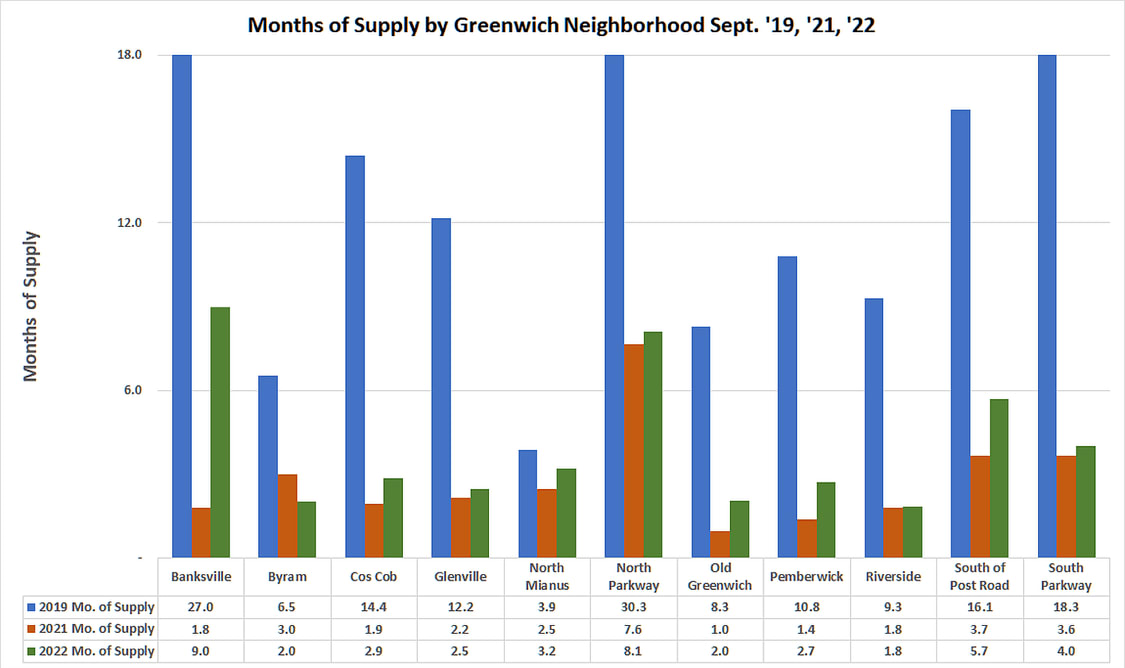
What is remarkable about our months of supply until the last couple of months the lower inventory matched the lower demand. In the last two months, we are starting to see months of supply go up as inventory is crawling slowly upwards and contracts and hence sales are dropping. If you are a buyer under $4 million don’t be fooled. It is still a tight market with MoS hovering around 3 months of supply, the sign of a super-seller’s market.
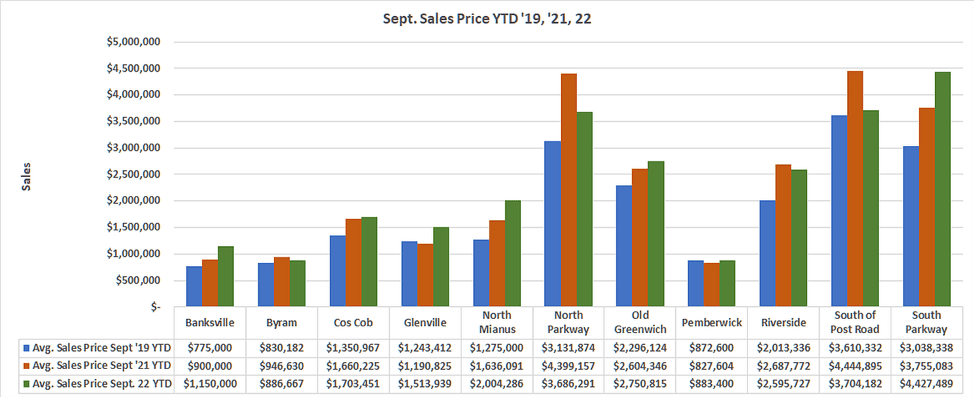
So, if inventory is going up and demand/contracts are going down, doesn’t that mean that prices will be dropping soon. We’ve certainly seeing that in some of the super-hot markets nationally, like Austin and Boise. So far, we are not seeing that in Greenwich. Our average price last year was $2.98M through the end of September. This year we have an average sales price of $3.1 million or an increase of 4.1% and we are actually doing better than that. If you look at the sales price/s.f. which is less affected by the mix of what is selling, we are up from $640/s.f. last year to $695/s.f. this year or an increase of 8.6%.
The average sales price is up in most neighborhoods including Glenville, Old Greenwich and South of the Parkway. Our average sales price is down slightly in backcountry and South of the Post Road where we have the most high-end houses. However, even there, the price per square foot is up. These numbers are for the year and by the ninth month of the year there is a fair amount of inertia so looking back over the last couple of months is better. At the same time, we do see these sales prices jump around when looking from month to month.
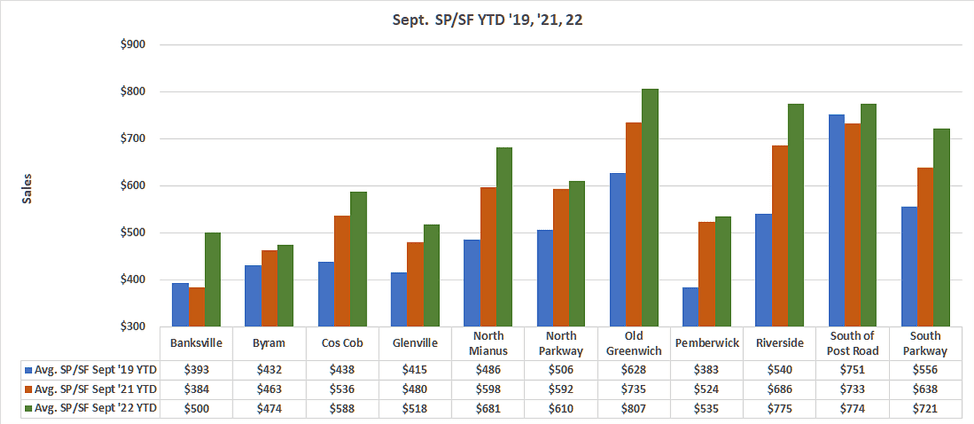
We’ll know in a couple of more months whether prices might drop in Greenwich, but with continuing good demand and continuing well below average inventory a big drop is unlikely. A slight increase is more likely, but we have a lot of exogenous factors that have little to do with Greenwich but can affect supply and demand here.
Stay tuned, if things settle down a little bit, we may well see a pickup in demand, while if we get even more uncertainty, more people are likely to put their purchasing plans on holds. Then again, we have a lot of smart contrarians….


